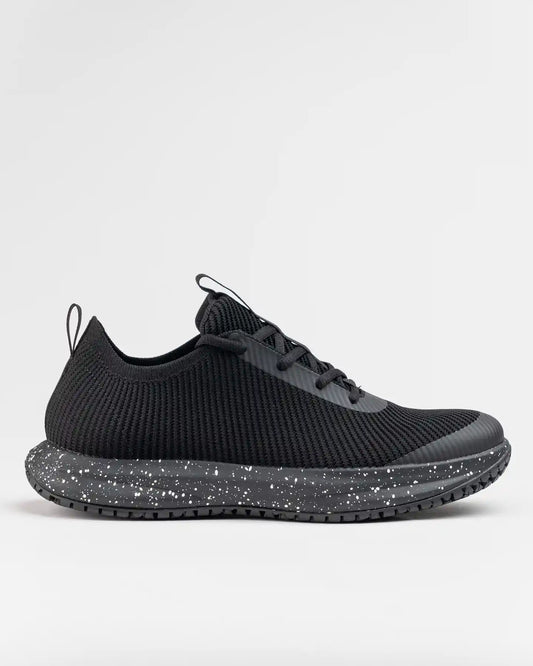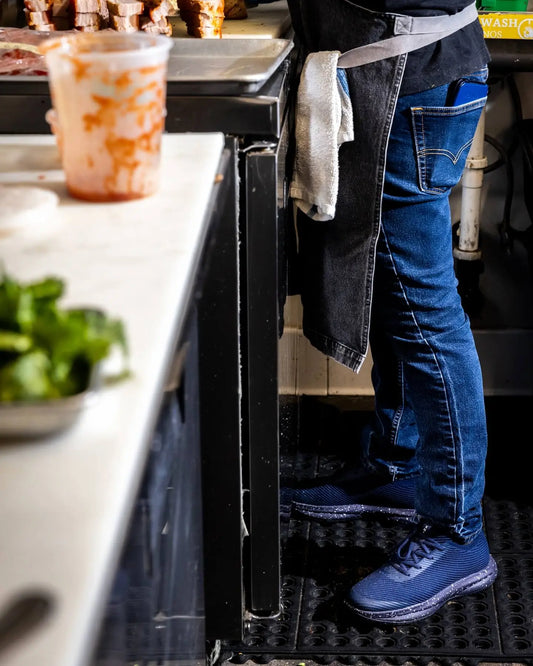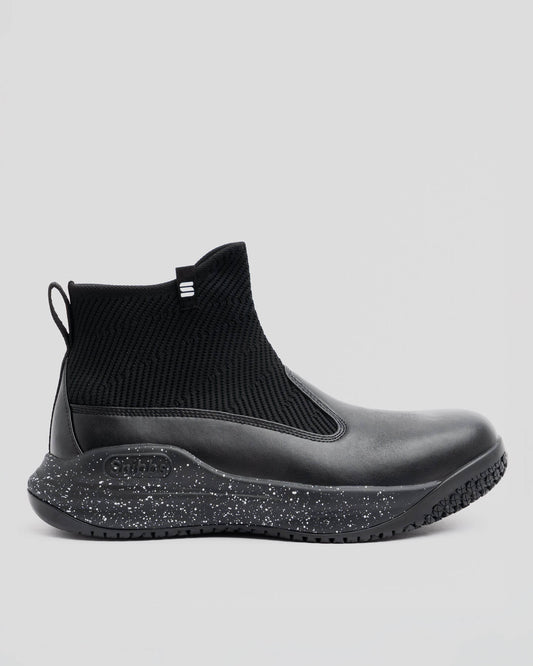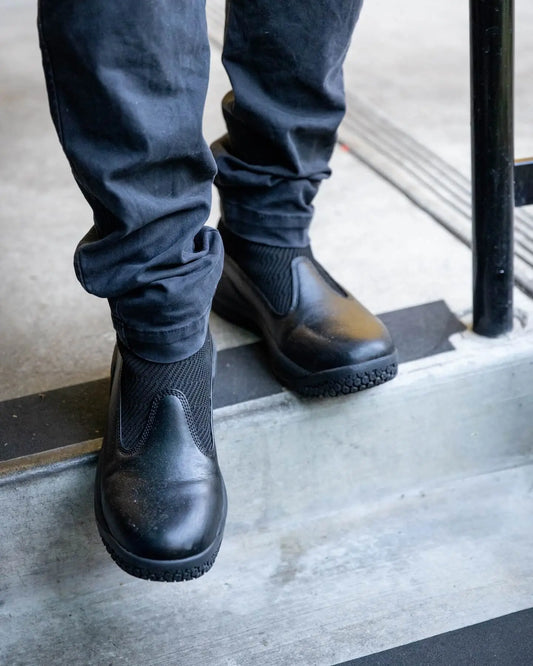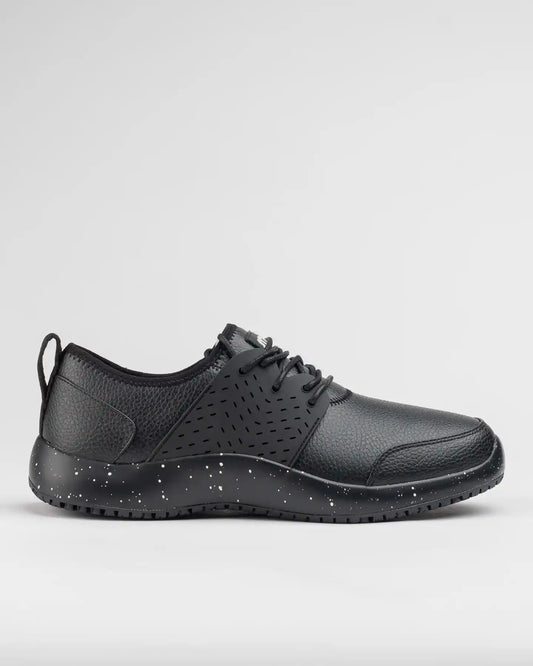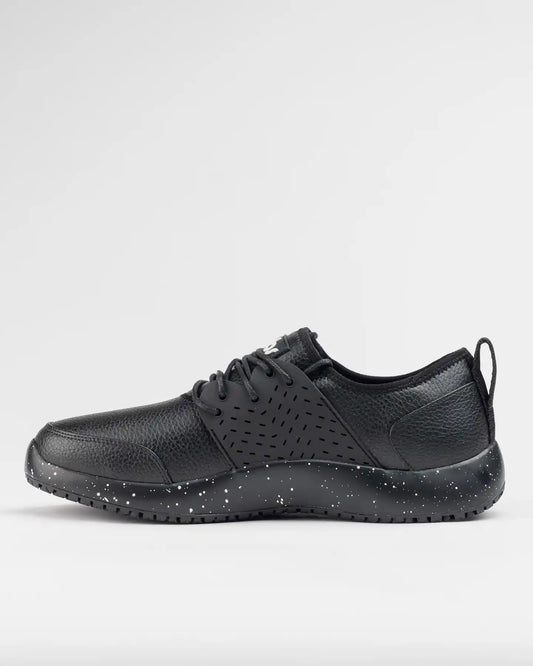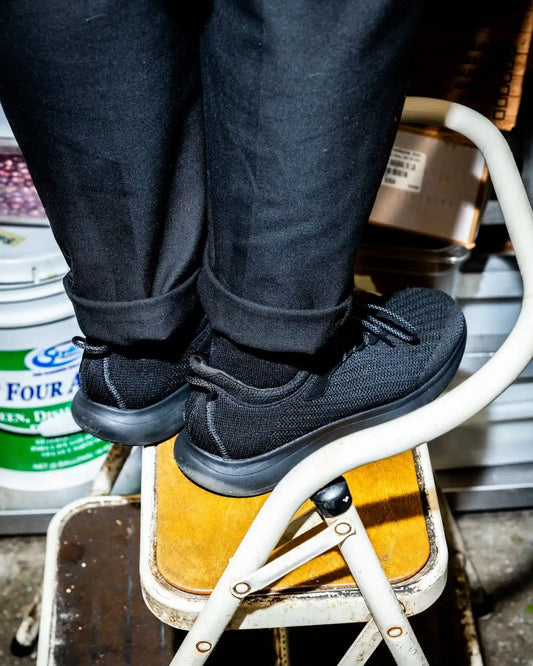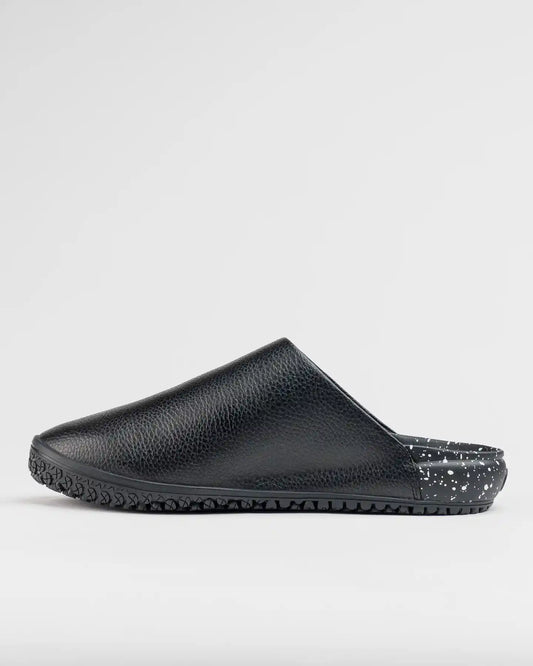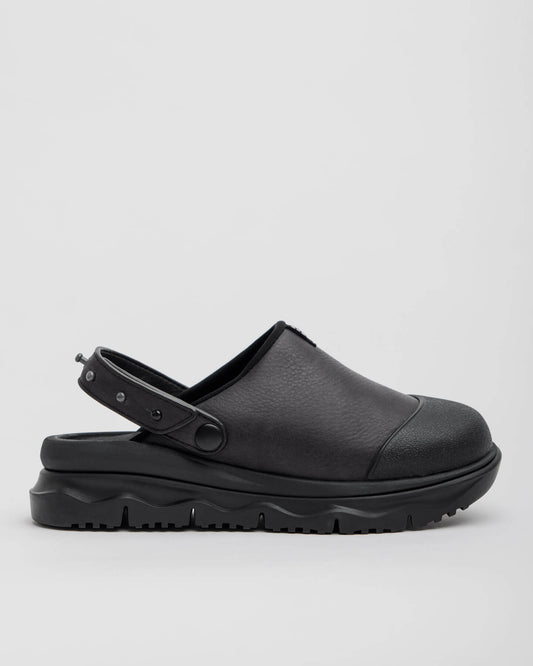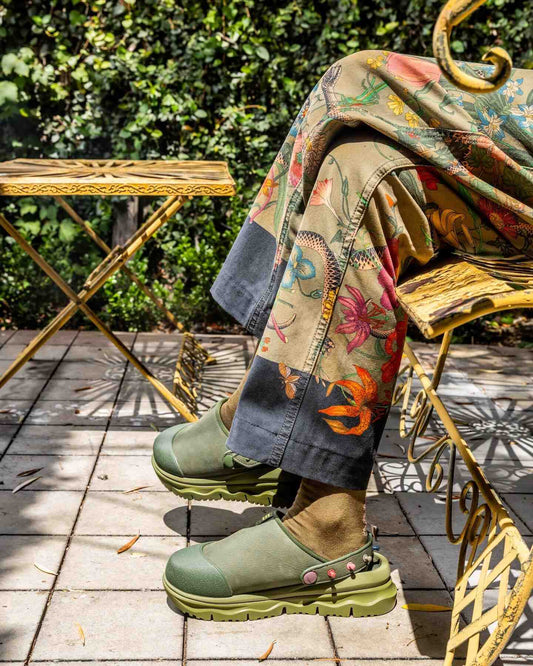What Are Non Slip Shoes?
Alex Kinejara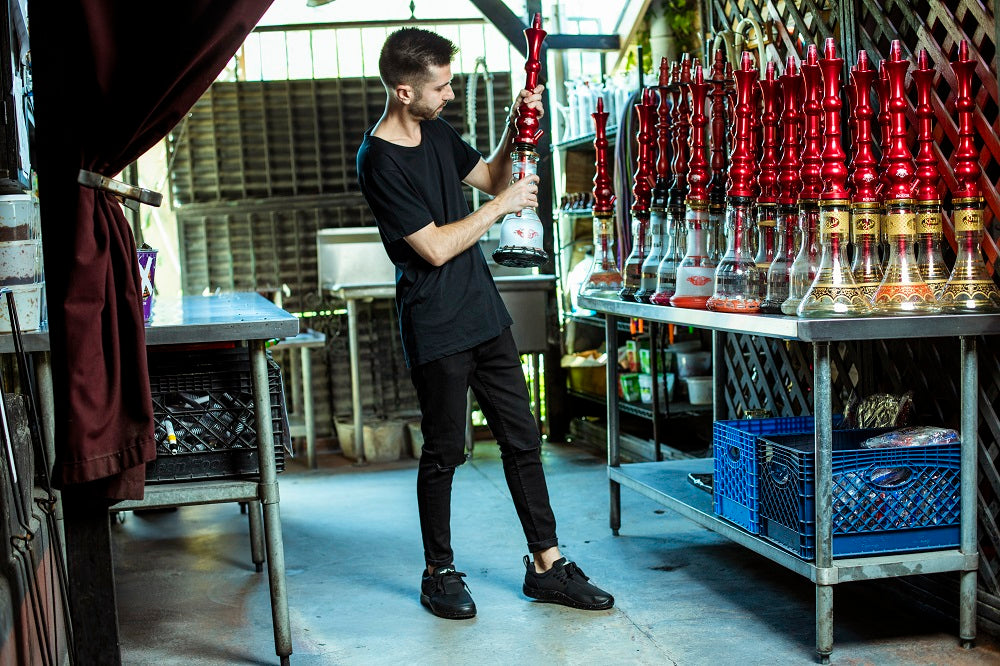
All it takes is one spilled soda, a single icy shingle, or a freshly mopped floor to send you tumbling head over feet, cursing the surface below you as you fall. But what if, instead of the slippery surface, it’s your shoes that are to blame?
Whether your job frequently exposes you to a variety of potentially treacherous terrain or you’re simply looking for something with a bit more grip as you go about your day-to-day, non slip shoes could be the key to keeping you on your feet.
That’s because they’re specially designed to minimize a person’s risk of slipping or falling. Slip resistant shoes stand apart from other shoes or sneakers because they’re built with specific environments in mind.
Before you lace up for the day, let’s take a closer look at how non slip shoes work and why your feet will benefit from a high-quality pair.
How Do Non Slip Shoes Work?
So, what are non slip shoes exactly? Simply put, what makes a slip resistant shoe effective comes down to its outsole and tread pattern. When it comes to understanding just how slip resistant shoes work, this is the first place to start. Let’s explore these two shoe components to gain a better understanding of their role when it comes to keeping you balanced and slip-free.
Outsole
Typically, the outsoles of non slip shoes are made of rubber, or rubber-like materials, and are designed to be softer and more flexible, resulting in better shock absorption and traction. Another common feature of slip resistant shoes is slightly-rounded edges. Unlike some flat-edged footwear, this helps to emit any extra liquid from below the shoe’s surface. With a rubber outsole and rounded edges, your slip resistant footwear can give you a better chance of not slipping or falling.
Tread Pattern
Slip resistant tread varies in size and shape but generally consists of circular, hexagonal, or triangular patterns. The smaller the pattern, the more friction it creates between the surface and the shoe. You may also notice that the grooves run adjacent to the tread pattern and help channel out any excess liquid from beneath the sole.
How To Tell If Shoes Are Non Slip
Whether shopping in-person or online, it’s good to know what to look for before buying a pair of slip resistant shoes. Here are a few tips on how to tell if shoes are non slip:
-
Check the box or product description – Often, it will specify on the box whether or not a shoe is slip resistant. If you’re shopping online, carefully read the product description. Many working professionals may find comfort in a trusty running shoe or rubber clog. But remember, these options might not offer the same degree of protection on wet surfaces as a slip resistant shoe will.
-
Examine the shoe sole – Regardless of the box or product description, always inspect the shoe and look at its sole. Does it have grooves that redirect trapped liquid from below the sole? Does it have tread that provides optimal slip resistance? Is it made from slightly softer and more flexible material to increase traction? If you can check all of these boxes, you’re already heading in the right direction.
- Try them on – Ask yourself, how do they feel? Is there enough wiggle room in the toes? Try to slide in the shoes and pay attention to how they grip each surface. If you’re buying online, be sure to read the reviews and the return or exchange policy. Look closely at pictures of the outsole to help you determine which shoe is just right for you.
What Are The Benefits Of Non Slip Shoes?
While they might not be the best footwear to moonwalk down the hallways of your office, non slip work shoes offer a host of benefits—both to employers and employees:
-
Safety – Accidents can happen in a split second, possibly resulting in severe injuries or time away from work. Wearing slip resistant shoes could substantially decrease the risk of injury in the workplace.
-
Productivity – Wearing slip resistant shoes allows a person to get the job done more efficiently. You no longer have to worry about tiptoeing around hospital halls or busy kitchens. Instead, you can power through a shift with confidence.
- Comfort – Any non slip shoe worth buying should have a sole designed for support. Most will have an ergonomic design to reduce strain and provide relief from being on your feet all day. Safety footwear that provides comfort and support may be your answer to how to stop your feet from hurting at work if you struggle with foot problems or pain.
According to the CDC and The National Institute of Occupational Safety and Health (NIOSH), slips, trips, and falls are the third most common type of non-fatal work-related injuries in the United States.1 With so much room for error and injury, that’s even more of a reason to ensure your footwear has got your back.
Now all you need to know is how to clean non slip shoes to keep them at their best with the right shoe care.
Snibbs: Footwear That’s Functional and Fresh
A slippery or wet surface can happen in a second and non slip shoes will keep you balanced and on your feet—no matter where your work takes you. But when you lace up in a pair of Snibbs, you can blend function and fashion. Here at Snibbs, we’ve worked with top professionals worldwide to deliver an ideal, slip resistant shoe for hundreds of work industries.
Its fresh, sleek design will make you excited to wear your work shoes both inside and outside the workplace. Each rubber outsole is engineered and certified by the industry-standard Brungraber Mark II Test. Plus, we’ve even partnered with Ortholite, the world’s leading insole providers, to create a custom formulated insole for maximum comfort.
You never know when you’ll need a little extra grip along the way.
Think style, comfort, mobility, and endurance. Think Snibbs.
Sources:
- The National Institute of Occupational Safety and Health (NIOSH). Slip Resistant Shoes. https://www.cdc.gov/niosh/newsroom/feature/slipresistantshoes.html
- Occupational Safety and Health Administration. Employer Personal Protective Equipment Workplace Hazard Assessment For Footwear. https://www.osha.gov/laws-regs/standardinterpretations/2013-12-09

